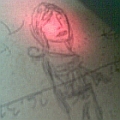cplprice
Posts: 94
Joined: 7/8/2011
From: Chickamauga GA
Status: offline

|
Historically, the Chinese committed 71 Divisions to the capture of Ichang/Yichang in September/October 1941 and while they managed to isolate the garrison for ten days, a relief column with forces from the attack on Changsha broke the siege. The Japanese tried several times(1939-'41-'42-'44)to take Changsha, each time but the last failing with significant losses. The Japanese would push toward the city, the Chinese would outflank and cut the Japanese supply lines, the Japanese would fight their way out. Time after time the Chinese employed the same tactic, fall back in the face of superior Japanese forces, work around their flank and cut their supply, then when the advance stalled due to lack of supply, counter attack. When I play the game as the Japanese I play like I was fighting against the historical Chinese and place a premium on shoring up my supply lines. I keep Ichang, fortify it, move some additional artillery there, stockpile supply, and move land based bombers to Hankow and Wuchang. I garrison my supply line from Hankow to Ichang. When the Chinese keep coming at it artillery and air decimate them. I use the air units at Hankow and Wuchang to train up bomber crews and rotate pilots in and out regularly. Hankow is easily supplied by water from Shanghai(the Yangtze)using small freighters that aren't really useful for much else. They transport supply up and bring resources back. I don't try to take Changsha, I let the Chinese have it, but push out one hex to the west, and southwest from Wuchang and the hex northwest of Nanchang so I have a secure perimeter and open supply line to Nanchang. I also push out northeast from Hankow to secure supply to Sinyang another location the Chinese try hard to take. These locations act like a sump and attract Chinese units where I can train up less experienced units and air crews.
You can try and replicate the Ichi-Go offensive of 1944 and clear China, but I don't. I clear the rail lines so I can rapidly move troops when necessary and create a buffer zone(one hex)around important locations, but generally leave the countryside to the Chinese.
|
 Printable Version
Printable Version











 New Messages
New Messages No New Messages
No New Messages Hot Topic w/ New Messages
Hot Topic w/ New Messages Hot Topic w/o New Messages
Hot Topic w/o New Messages Locked w/ New Messages
Locked w/ New Messages Locked w/o New Messages
Locked w/o New Messages Post New Thread
Post New Thread